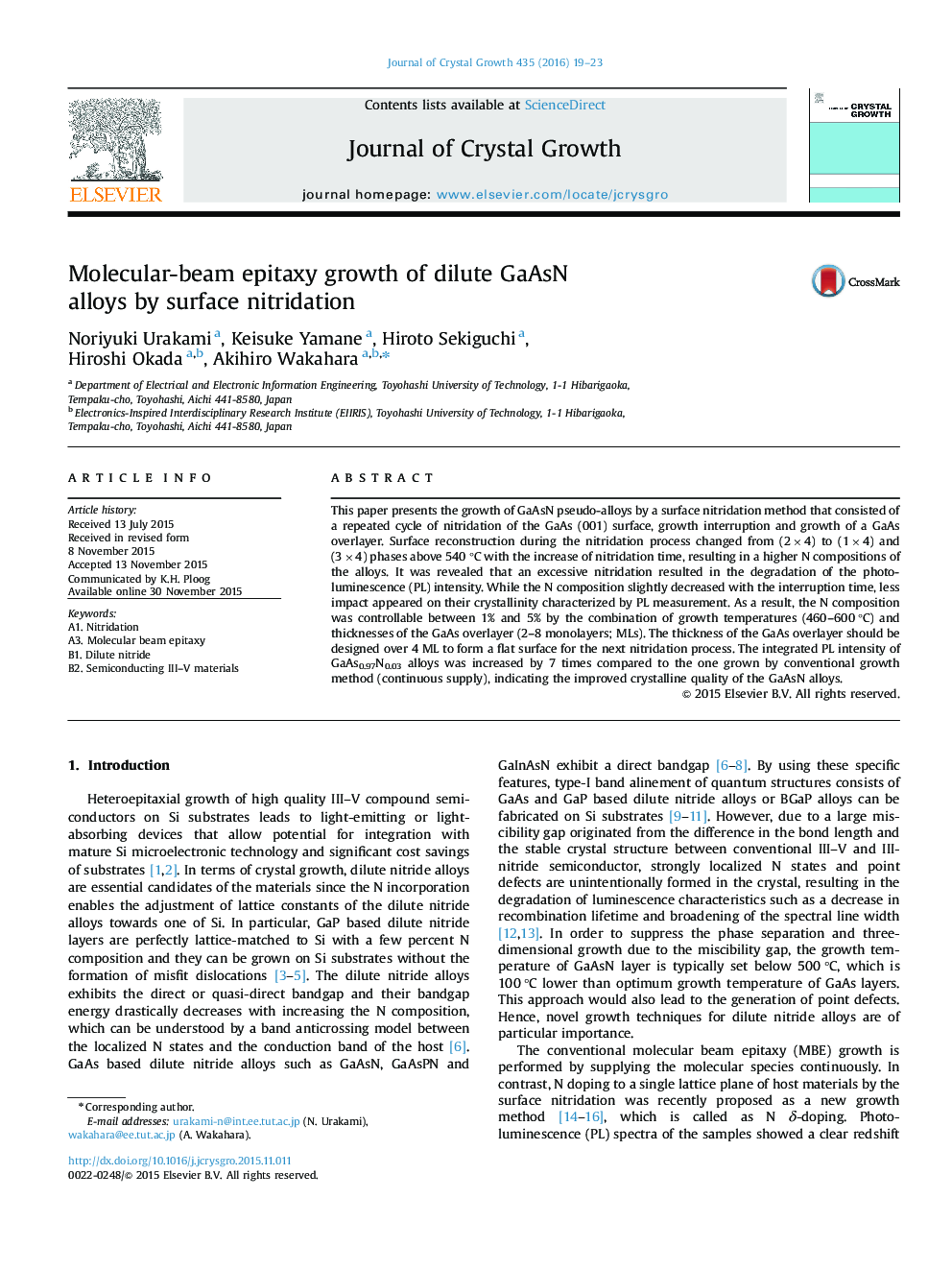| Article ID | Journal | Published Year | Pages | File Type |
|---|---|---|---|---|
| 8149465 | Journal of Crystal Growth | 2016 | 5 Pages |
Abstract
This paper presents the growth of GaAsN pseudo-alloys by a surface nitridation method that consisted of a repeated cycle of nitridation of the GaAs (001) surface, growth interruption and growth of a GaAs overlayer. Surface reconstruction during the nitridation process changed from (2Ã4) to (1Ã4) and (3Ã4) phases above 540 °C with the increase of nitridation time, resulting in a higher N compositions of the alloys. It was revealed that an excessive nitridation resulted in the degradation of the photoluminescence (PL) intensity. While the N composition slightly decreased with the interruption time, less impact appeared on their crystallinity characterized by PL measurement. As a result, the N composition was controllable between 1% and 5% by the combination of growth temperatures (460-600 °C) and thicknesses of the GaAs overlayer (2-8 monolayers; MLs). The thickness of the GaAs overlayer should be designed over 4 ML to form a flat surface for the next nitridation process. The integrated PL intensity of GaAs0.97N0.03 alloys was increased by 7 times compared to the one grown by conventional growth method (continuous supply), indicating the improved crystalline quality of the GaAsN alloys.
Keywords
Related Topics
Physical Sciences and Engineering
Physics and Astronomy
Condensed Matter Physics
Authors
Noriyuki Urakami, Keisuke Yamane, Hiroto Sekiguchi, Hiroshi Okada, Akihiro Wakahara,
